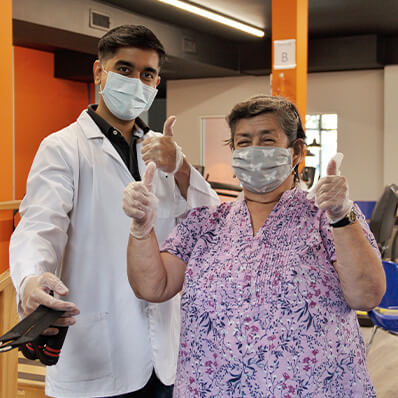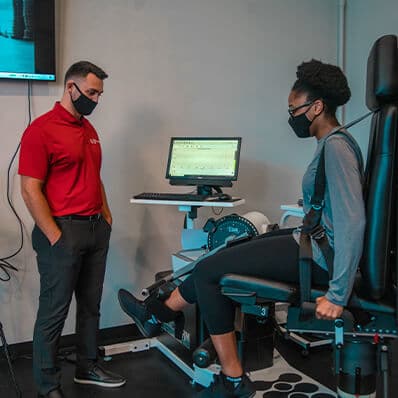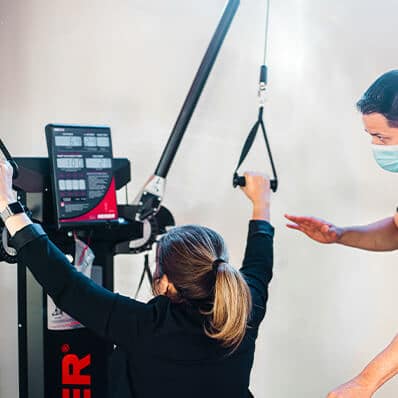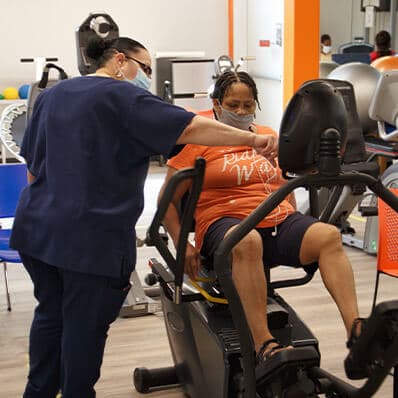A 58 year-old male, was admitted to physical therapy after a two-month history of shoulder pain. Interventions were aimed at strengthening the periscapular musculature and rotator cuff, improving range of motion, decreasing pain, and returning to a pre-morbid level of injury. Manipulations to the cervicothoracic junction were performed in conjunction with exercise interventions. Outcomes included, changes in the VAS (visual analog pain scale), patient rating of overall improvement, and Quick DASH measurement.
At the time of discharge, patient was determined to have a successful outcome based on decreased pain to 2/10 on the VAS and reports of 60% overall improvement. These tools are both found to be valid and reliable when used as acute subjective measures.
This case report indicates manipulations directed to the thoracic spine may be a useful adjunct to pragmatic treatment for patients with shoulder pain.
Shoulder pain is one of the most common diagnoses seen in a physical therapy setting. Approximately 16% to 20% of the population experiences shoulder pain, making it the second most common musculoskeletal condition following low back pain[1]. Recent discussions in the physical therapy community have been targeted towards addressing the thoracic spine for patients with shoulder impairments, particularly those with signs and symptoms of subacromial impingement. The need for evidence to support these interventions is apparent through the increased use of manual and manipulative therapy by practicing therapists globally. A key notion discussed among research of thoracic manipulations is the concept of regional interdependence. Wainner and colleagues describe regional interdependence as “the concept that seemingly unrelated impairments in a remote anatomical region may contribute to, or be associated with, the patient’s primary complaint[2].” This perception suggests that interventions targeting adjacent
anatomical areas may directly affect the outcomes of the involved joint.
The outcome measures used for this case study included pain according the visual analog scale (VAS), overall rating of change, and the Disabilities of the Arm, Shoulder, and Hand (Quick DASH) questionnaire. Pain intensity was rated using the VAS, which rates pain on a scale from 0 to 10, with 0 being no pain and 10 being very high pain levels. The visual analog scale has been shown to be a reliable and valid tool for assessing immediate changes in pain intensity, with a test-retest reliability of between 0.95-0.97 and the minimally clinically important difference of 12 mm (+/- 3 mm at a 95% CI)[2]. An overall rating of change was measured at discharge by asking the patient to rate their global improvement since beginning physical therapy, as 0% being no improvement and 100% being completely asymptomatic and fully functional. This can be compared to a global rate of change scale, which is considered to be a valid reference for establishing a successful outcome[4]. The final outcome measure used was the Quick DASH questionnaire, which is a measure of overall upper extremity function and can be interpreted by the patient to target the shoulder, elbow, or hand.
Objective measurements included general observation of scapular kinematics with overhead motion, palpation, manual muscle testing of both the left and right upper extremity, active and passive range of motion of the left and right shoulders, cervical clearing exam, and some special tests. There was slight dyskinesia noted with lowering of the left arm indicating some weakness of the scapular stabilizers. Resisted testing and range of motion produced positive findings on the left and can be seen in greater detail in tables 1 and 2 (below) respectively. Palpation of the left posterior shoulder capsule and infraspinatus produced moderate pain. The cervical clearing exam was negative, being that it did not reproduce any of the posterior shoulder symptoms. Special tests performed included the Hawkins-Kennedy impingement test, the Neer impingement test and the empty-can test, all of which have been shown to have good reliability and validity.
A re-evaluation was performed at the ninth therapy session and, due to self-discharge, these measured were used to assess outcomes of the intervention techniques. The overall rating of improvement was reported by the patient as being at 60% of full function and recovery (Table 3). F.B. reported improved tolerance for ADL activities (recreational, self care and home management) to slight symptoms, which is an improvement from moderate to severe symptom reports at the time of the initial evaluation. Objective measurements taken at the time of re-evaluation demonstrate improved muscle strength of all shoulder musculature, excluding the external rotators, to > 4+/5. The external rotators improved but were graded as 4/5. Full and pain free motion was obtained and all special tests, including Hawkins-Kennedy were negative for reproduction of any symptoms. Positive findings included moderate tenderness over posterior infraspinatus and mild pain with resisted abduction and external rotation. Pain, according to the VAS, was reported as being 0/10 at the time of the re-evaluation and 2/10 at worst, representing an improvement of 8 points from the initial evaluation (Table 3).
A successful outcome was defined as being greater than 50% improvement on the Quick DASH questionnaire, a pain rating of <3/10 on the VAS, and a perceived overall improvement score of > 50%. According to these criteria, patient was moderately successful in satisfying two of the three criteria and, considering self-discharge, did not meet the desired outcome for the Quick DASH questionnaire.
The success denoted through this case study supports the current evidence in that there is ample low-level evidence to support the use of manipulations to the cervicothoracic junction for patients presenting with shoulder impairments and the need for higher-level research studies is warranted. The term regional interdependence is defined as “the concept that seemingly unrelated impairments in a remote anatomical region may contribute to, or be associated with, the patient’s primary complaint[2].” This concept is continuously supported throughout the literature and applied in cases of shoulder impingement and thoracic manipulations.




